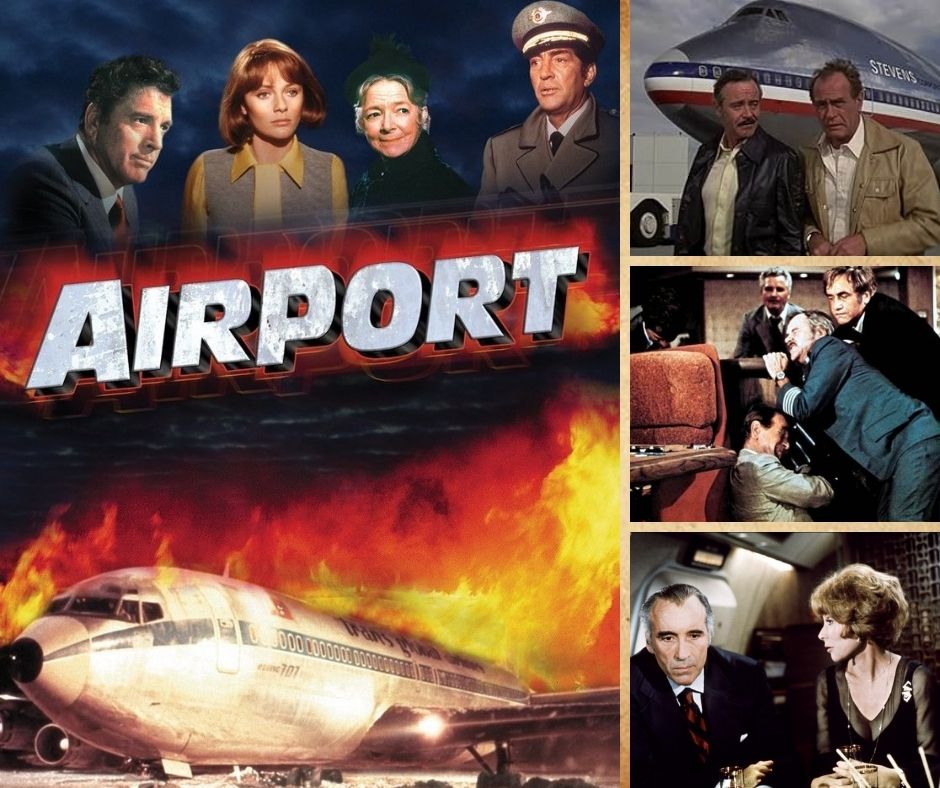Airport ’77
The Last Flight of a Dying Genre

Eight years. That’s how long it took for the disaster movie genre to explode (with the original Airport in 1970), grow (The Poseidon Adventure, The Towering Inferno), try to evolve by blending with other trends—political thrillers (Black Sunday), prestige dramas (Voyage of the Damned), historical recreations (The Hindenburg)—and eventually lose the audience’s interest. The last big attempt was Airport ’77, the third entry in the franchise. It tried to keep the genre afloat by sticking to the original formula, just placing it in a new setting. And while it did decently at the box office and even earned two Academy Award nominations, it clearly showed signs of audience fatigue. In the next two years, The Swarm, Meteor, and this film’s own sequel, The Concorde… Airport ’79, would serve as the genre’s death rattles.
Airport ’77 keeps closely to the formula the original set up: big-name casts, impressive catastrophes, and characters we remember more for the actors playing them than for any real arc. This time, the danger shifts from the sky to the sea, as the plane crashes off course early on into the ocean and begins to sink. The passengers are trapped underwater while a rescue team races against time. It’s a new setting, sure, but everything else feels all too familiar.
The first act introduces us to the usual lineup: a couple facing relationship troubles, a noble flight engineer and his caring girlfriend, the estranged daughter of the plane’s billionaire owner (with her son in tow), and a grandmother traveling with her blind grandson. There’s also a trio of hijackers posing as crew, planning to reroute the flight and steal the priceless artwork onboard. They do that, but after an accident due to the need of the hijackers to fly low to escape the radar, it clashes into the ocean and begins to sink.
It is efficient context, emotional framing, and a good enough setting. The suspense is effective, the staging works, the visual effects hold up surprisingly well, and the pacing is smooth—all of which help make the disaster scenes land. Performances are mostly fine and John Cacavas’s score is serviceable, though not particularly memorable.
The film’s only truly weak link is Lee Grant. As Karen Wallace, she delivers a performance so loud and theatrical that it quickly becomes exhausting. Grant—who had won an Oscar for Shampoo two years earlier and had just been nominated for Voyage of the Damned—seems to be going for another nod here, dialing every scene up like it’s her awards clip. By her third outburst, you’re ready to push her out of the emergency hatch yourself.
Thankfully, the climax delivers. As the water rises and escape options narrow the tension finally locks in. For a brief stretch, Airport ’77 justifies its place in the canon—even if that place is modest. At just under two hours, it’s a solid, if unremarkable, entry in the genre. For disaster film fans, it’s the cinematic version of comfort food—predictable, functional, and occasionally satisfying. You recognize the beats as they arrive—the majestic plane reveal, the crew walk-through, the obligatory romantic conflict—and you ride them out as expected. It’s formula filmmaking with just enough competence to make it watchable.
Looking back, it’s a relief that audiences in 1977 were not as tolerant as today’s and didn’t settle for recycled tropes. Airport ’77 did what it could, but the genre had run out of gas. People were ready for something new—and thankfully, Star Wars was right there. That same year, moviegoers started looking to the skies for something entirely different. Something fresher, more exciting, and—most of all—free of a screaming Lee Grant.